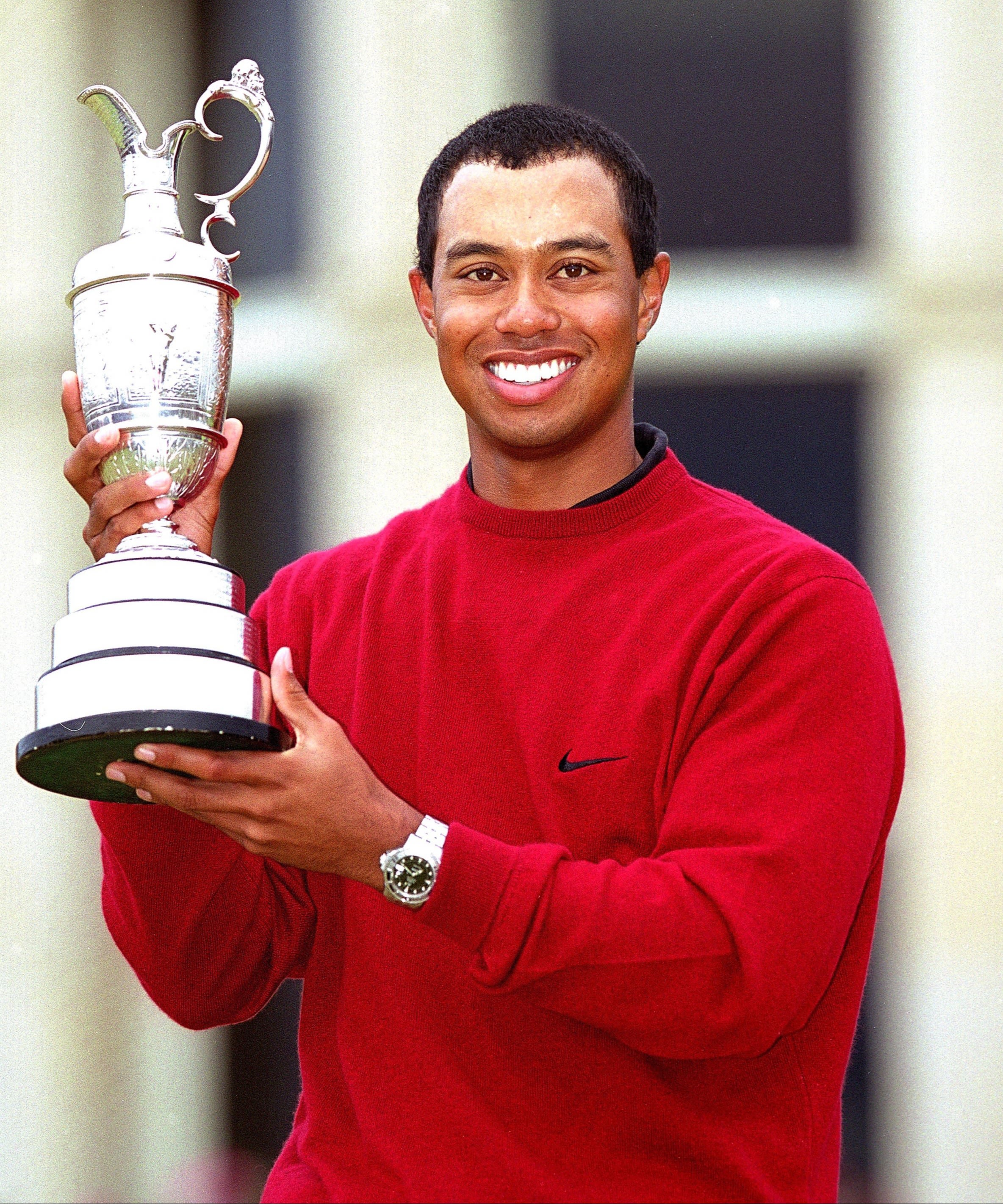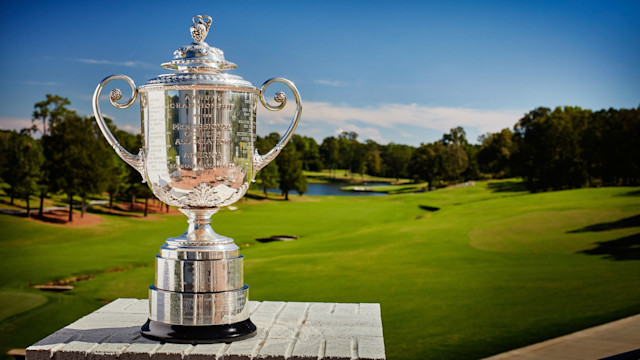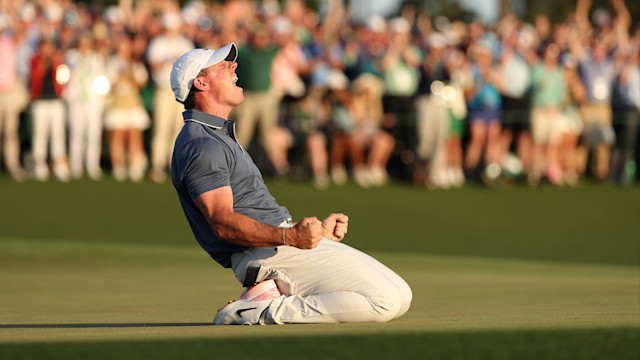Category - Major Events
The Golf Career Grand Slam Explained: History, Winners & Who's Closest
By Adam Stanley
Published on

The four trophies of the men's golf Major Championships.
As fans and followers of golf, the striking image of Rory McIlroy on his knees, with tears down his face and a primal scream escaping his mouth, is not one you’ll forget any time soon.
McIlroy, a Masters Champion.
The latest to complete the career Grand Slam.

(Richard Heathcote/Getty Images)
"I think I’ve carried that burden since August 2014. It’s nearly 11 years. And not just about winning my next major, but the career Grand Slam. Trying to join a group of five players to do it and watching a lot of my peers get Green Jackets in the process,” McIlroy said after his win at Augusta National. “Look, it was a heavy weight to carry. Thankfully, now I don’t have to carry it... and it frees me up."
With his Masters triumph, McIlroy became just the sixth male golfer in history to complete the career grand slam and the first since Tiger Woods a quarter-century ago. In an appearance on The Tonight Show with Jimmy Fallon just last week, McIlroy revealed that Woods’ message to McIlroy was as simple – and cool – as maybe any.
“’Welcome to the club, kid,’” McIlroy said Woods sent.
The club.
It’s, perhaps, the most special in golf.
HISTORY OF THE GRAND SLAM
It wasn’t always easy (well, “easy”) to win the Grand Slam.
In fact, it was really the advent of transportation in the early 1900s that allowed for golfers to try to complete the incredible feat, according to global golf historian (and official historian for Carnoustie Golf Club in Scotland and Diablo Country Club in California) David Mackesey. Bobby Jones as well deserves some of the credit, as no one thought of the “impregnable quadrilateral” until Jones won all of The Amateur (British Amateur), The Open, the U.S. Open, and the U.S. Open in the same 1930 summer.
The United States Golf Association and the Royal & Ancient, according to Mackesey, didn’t always cooperate on dates of their championships, either.

Bobby Jones and O.B. Keeler with Jones' 1930 grand slam trophies: the British Open, the U.S. Amateur, the British Amateur and the U.S. Open. (Getty Images)
“It was hard to play both the U.S. Open and The Open in the same year unless the R&A allowed for a week or two of travel,” Mackesey says. “And then you might travel to Great Britain, pay an entry fee, try to qualify, and if you didn’t you just took a ship back home.”
If you were a golf professional 110 years ago, you basically paid an entry fee to try to compete in an open tournament and the rules for said tournament were established by people looking out for the amateur golfer and the pros, at the time, didn’t have a voice – until the PGA of America came along.
The PGA made competing in their event more friendly to the professionals and it became the third "big" championship. It was a member organization and had a prize purse much larger than the U.S. Open.
“The PGA of America did something that attracted professionals,” Mackesey says. “They moved their schedule if they could play in the U.S. Open, The Open, and the PGA. That’s how you determine what a major is. The biggest purse, and the best players show up.”
"The PGA of America did something that attracted professionals. They moved their schedule if they could play in the U.S. Open, The Open, and the PGA. That’s how you determine what a major is. The biggest purse, and the best players show up."
David Mackesey, Golf Historian
There was some debate about the fourth tournament, at least through the early part of the 1900s. The Agua Caliente, for example, had a $25,000 purse – which was bigger than all the other three combines. All the pros came to that one if they could, Mackesey explains.
In 1934, Bobby Jones created his invitational tournament in Augusta, Georgia. The same method for crafting a field had already been long done, however, starting in 1899 with the Western Open. That is, Mackesey says, what Jones copied for his event. But with the Masters becoming such a media darling and after the PGA became a stroke-play competition, it was basically confirmed what the big four events would be.
The Masters, PGA Championship, U.S. Open and Open Championship were set in stone. To win the career slam . . . you'd need to win those four.
Not all of the game’s best have won the grand slam for a variety of reasons.
Arnold Palmer is perhaps the most popular to have fallen short. Sam Snead is the winningest. Willie Anderson won four U.S. Open trophies but died in 1910.

Arnold Palmer.
“Part of (not winning the Grand Slam) was qualifying, part of it was travel, part of it was that the tournaments just didn’t exist,” Mackesey says. “From the modern perspective, to me, we hold certain things into a career. Were you an MVP? Were you a champion? It’s just a way of filtering a way of finding order in the way that humans like to have order.
“The player thing is huge, but the fans really make things something because it really generates attention in the way that other championships don’t.”
MEN’S CAREER GRAND SLAM WINNERS
Gene Sarazen: In 1935, Sarazen completed his Grand Slam by winning the Masters.

Gene Sarazen was the first professional golfer capture the modern career grand slam.
Ben Hogan: Hogan secured his Grand Slam with a win at The Open Championship in 1953. Famously, that was the only time he ever played The Open. He won three majors in 1953 alone.
Gary Player: The South African achieved his Grand Slam in 1965 by winning the U.S. Open.
Jack Nicklaus: Nicklaus completed his Grand Slam in 1966 with a win at The Open Championship. He, of course, won 18 majors in his career.
Tiger Woods: Woods achieved his Grand Slam in 2000 by winning The Open Championship. After winning the Masters in 2001, Woods held all four major titles at the same time – dubbed the “Tiger Slam.”

(Andrew Redington /Allsport)
Rory McIlroy: In 2025, McIlroy joined this elite group by winning the Masters.
WHO IS NEXT?

Jordan Spieth is seeking the career grand slam this week at Quail Hollow.
With the 2025 PGA Championship around the corner, all eyes are on Jordan Spieth, who has the opportunity to join the exclusive club and has previously won the Masters (2015), U.S. Open (2015), and The Open Championship (2017). Spieth’s best result at the PGA Championship came in 2015 when he finished second. He also finished tied for third in 2019.
Other top-ranked notables with a chance to complete the career grand slam:
- Phil Mickelson (only missing the U.S. Open)
- Xander Schauffele (missing the Masters and the U.S. Open)
- Brooks Koepka (missing the Masters and The Open)
- Collin Morikawa (missing the Masters and the U.S. Open)
- Scottie Scheffler (he is, of course, missing all of the U.S. Open, The Open, and the PGA Championship. But given the run he’s on of late it wouldn’t be surprising to see him, at just 28, go on a special major stretch)
WOMEN’S CAREER GRAND SLAM WINNERS
There are five majors on the LPGA Tour schedule, but it recognizes seven players as grand slam winners.
Louise Suggs (1957) was the first player in LPGA history to achieve the career grand slam. The others include Mickey Wright (1962), Pat Bradley (1986), Juli Inkster (1999), Karrie Webb (2001), and Annika Sorenstam (2003).

Karrie Webb.
Webb is the only player to have won the super career grand slam, having won five different majors.
There are a handful of female golfers with a chance to complete their own grand-slam legacy as well including:
- Lydia Ko (earned a spot in the LPGA Hall of Fame last year and needs either the U.S. Women’s Open or KPMG Women’s PGA Championship. She lost in a playoff in the 2016 KPMG Women’s PGA to Brooke Henderson)

Lydia Ko.
- Anna Nordqvist (needs either the Chevron Championship or U.S. Women’s Open)
- In Gee Chun (needs either the Chevron Championship or AIG Women’s Open)
- Yani Tseng (needs either the U.S. Women’s Open or Evian Championship)
Needless to say, the career Grand Slam is not just one of golf's most special achievements. It's one of the most special accomplishments in sports.


